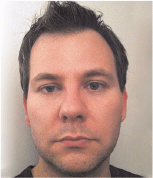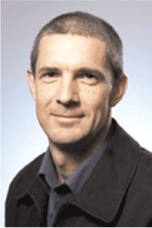Assessing connections between aquifers in the CSG industry
S. Gossmann A , J. Herbert A , M. Tovar A , L. Townley B and A. Brooker BA Arrow Energy.
B NTEC Environmental Technology.
The APPEA Journal 52(2) 673-673 https://doi.org/10.1071/AJ11087
Published: 2012
Abstract
Development of conventional and unconventional gas resources, including CSG, has many similarities; however, there are some key differences that may lead to potential impacts on groundwater supply. Conventional reservoirs are usually located at greater depths than commonly exploited groundwater resources and develop when gas becomes trapped by impermeable bounding layers.
In the CSG industry, reservoirs are often lower in permeability than aquifers that commonly provide groundwater supply for agricultural, industrial, urban, and other uses; the CSG plays may be located above and below these aquifers. The management of reservoir/aquifer interconnections necessitates a program of focused-data acquisition. For example, groundwater transfer from shallow aquifers to underlying CSG reservoirs may occur where CSG-containing units subcrop beneath shallow aquifers, possibly at significant distances from operating wells.
Arrow Energy is undertaking investigations of connectivity between aquifers, including the connection between the Condamine Alluvium and the CSG-containing Walloon Subgroup. This extended abstract explores the use of analytical and numerical modelling to represent the aforementioned situation as follows:
The behaviour of numerical models at the point of contact between CSG-containing units and overlying alluvial aquifers is being examined in detail—there is specific focus on how horizontal and vertical hydraulic conductivities are assigned at the interface between aquifers. This localised sub-region within a regional scale groundwater flow model has the potential to control the estimations of flows that are most interesting to stakeholders.
The relationship between modelling approaches used by reservoir engineers and hydrogeologists is also explored.

Since completing his MSc at the University of Tuebingen, Germany, Simon’s work has focused on assessing, monitoring, modelling, and managing impact to groundwater associated with the upstream and downstream oil and gas sectors. Simon has undertaken hydrogeological investigations in a number of different settings across Western Australia, Queensland, and South Australia. His work includes managing and implementing a hydrogeological exploration program to support site selection for an underground coal gasification project. In his present role, he provides strategic input to project planning and approvals for two large-scale, upstream CSG developments in the Surat and Bowen Basins, Queensland. He leads a team of eight hydrogeologists working towards understanding and mitigating the impacts on groundwater resources resulting from dewatering associated with these projects. His role requires him to provide direction on technical matters to specialists and communicate clearly with internal decision-makers and external stakeholders. |

John Herbert is a hydrogeologist with 24 years of experience in the groundwater, environmental, and mining sectors, undertaking groundwater investigations, groundwater modelling, environmental assessment, site remediation, and mineral exploration. |

Miguel Tovar is a senior reservoir engineer at Arrow Energy, focused on the development of CSG assets across eastern Australia, to deliver a CSG-LNG project. Previously, he worked as reservoir engineer for Vitruvian Exploration (formerly CDX GAS), a US-based E&P company, developing unconventional resources in the Appalachian basin region using pinnate well technology. He also worked as research assistant in reservoir engineering at West Virginia University and as productivity engineer at PDVSA Intevep, a research centre for the state oil and gas company in Venezuela. He earned a master’s degree in petroleum and natural gas from West Virginia University, a master’s degree in drilling engineering from Universidad del Zulia in Venezuela, and a bachelor’s degree in chemistry from Universidad Central de Venezuela. He has publications about CO2 sequestration in coals, production databases, and catalysis applied to fuel components. |

Lloyd Townley is a civil and environmental engineer with more than 30 years of experience in groundwater modelling. He has worked at UWA and CSIRO as a research scientist, in a global water management role with Rio Tinto, and as a consultant to mining, CSG, and water industries. |

Andrew Brooker has more than 15 years of experience in a diverse range of modelling applications and research activities. He has worked on groundwater modelling for the mining industry, modelling of lakes and estuaries, and multi-physics modelling in the nuclear industry. |
References
DHI-WASY Gmbh., 2010—FEFLOW® 6: finite element subsurface flow and transport simulation system—user manual. Berlin, Germany: DHI.HydroGeologic Inc., 2011—MODFLOW-SURFACT Software (v. 4.0).


